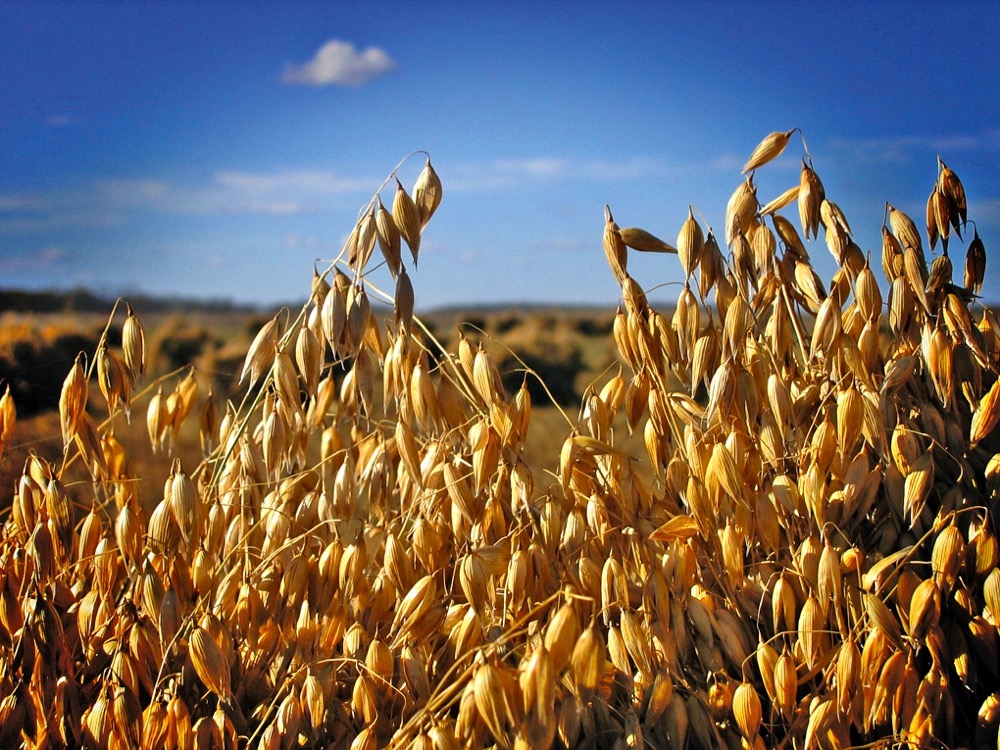The trend to lower acreages of barley, oats and flaxseed in recent years has largely reflected the increased profitability in alternative grains and oilseeds, and canola in particular. As Western Canada’s darling, canola production crested at nearly 18 million tonnes in 2013, and even more is being called for with the Canola Council of Canada’s 2025 target of 26 million.
“Growers look at net returns and then they pay attention to agronomic issues,” says Randy Strychar, president of oatInformation.com. “Net returns dictate what they want to put in the ground, and that by a landslide has been canola over the last five to seven years.”
Read Also

Producers aren’t panicking over tariffs and trade threats
The influence of tariff and trade uncertainity on farm business decisions.
Pulse and soybean production has also been on the rise for similar reasons.
But with softening returns and price prospects of canola and wheat during the spring, farmers reported greater keenness to plant barley, oats and flaxseed. Statistics Canada got a lot of media attention in April when it estimated barley- and oats-seeded areas would rise, respectively, 10.2 per cent and 30.3 per cent up from their final acres a year ago. Together, StatsCan saw those crops accounting for nearly 1.5 million additional acres versus 2014, and the agency also predicted flaxseed area would also rise 4.8 per cent to over 1.6 million acres.
If, however, those figures are compared to farmers’ seeding intentions of March 2014, the changes are far less dramatic. For barley, intended acres were only about three per cent higher than the intended acres from the same time a year ago. So just where is the West’s interest in these crops heading?
Barley
Patrick Rowan, senior manager of Canadian barley operations with Bari-Canada, a division of Anheuser-Busch, was watching the spring numbers too, expecting 2015 acreage to end up as high as projected — 6.48 million — if not higher. With prices at $5 a bushel or higher in mid-May, malt barley looked to offer a decent return for those who want to contract it.
“Most of the farmers we deal with are at 80 bushels to 100 bushels an acre, (and) at $400 to $500 gross an acre, you’re doing not too badly,” Rowan says.
It’s definitely a reversal in barley’s fortunes. Excess moisture and flooded acres last year contributed to driving 2014 Prairie barley acres and production down to their lowest levels since the 1960s. It was a long way off from 1989 to 1998, when annual Canadian barley production averaged 12.74 million tonnes, with a peak of 15 million in 1996.
Through the farm income crisis of the early 2000s, Prairie farmers opted for low-cost crops, but much has changed since then. The grain industry has consolidated, and transparent price discovery disappeared. ICE Futures Canada delisted its western barley contract, and the open market in barley futures that replaced it has generated little to no volume.
“This is a problem when farmers are looking for true price discovery, especially when deciding on what crops to plant,” says Jim Beusekom, president of Market Place Commodities. “It is a problem from our perspective on how to manage price risk on barley purchased or sold for future delivery.”
Meanwhile, feed barley demand has declined. Alberta cattle numbers declined drastically after the 2003 BSE crisis. Hog numbers fell as well, especially between 2007 and 2012 when pork prices were extremely low.
Feed acres took a further hit with the elimination of the former Canadian Wheat Board’s monopoly and the amount of barley produced for malt versus feed grew.
But the outlook for both feed and malt barley is now on the upswing. The livestock industry is growing again, Beusekom says, and the low Canadian dollar keeps Canadian grain competitive.
The malt industry too is looking more attractive.
“Certainly there’s a demand for it,” says Rowan. “In Canada, you have the malt houses in Western Canada and a couple in Eastern Canada, they come very close to malting close to a million tonnes, especially with the advent of the craft breweries along the West Coast of Canada. And the U.S. craft breweries are mushrooming everywhere.”
Exports have improved as well, and Saudi Arabia, which recently bought a stake in the CWB, has publicly stated its desire to import more of its feed needs.
“Canada is one of the countries that has exportable stocks of barley and should be able to compete with that,” says Beusekom. China too is a notable buyer, of both feed and malt barley.
An additional plus is better-yielding barley varieties, which boost farmers’ margins, making the crop more competitive with others.
“When they can get higher-yielding and better-quality varieties, it helps return the bottom line to producers,” Beusekom says.
Nevertheless, he believes it’s unlikely that barley production will return to what it’d been in the late ’90s and early 2000s: “Other commodities would have to lose those acres for barley to do it, and I can’t see that happening right away.”
Oats
For oat acres to top out at 3.65 million this year represents a huge 30 per cent bump from last year’s weather-diminished crop, and even a 14 per cent jump from March 2014’s intentions.
“My thought is that the oats acres probably will not be as big as the Stats Canada early indication,” says Chris Ferris, senior grains analyst with Informa Economics.
Between the start of March to the first week of May, nearby Chicago oat futures dropped from US$2.99/bu. to around $2.36/bu. That’s a dramatic decline from $3.80/bu. in September. And following StatsCan’s seeding forecast, prices fell C$0.30/bu. in a week.
OatInformation.com’s Strychar notes the trade was expecting only a five to 10 per cent increase from last year’s final acres. He too believes 2015 oats plantings won’t end up as high as StatsCan reported.
“On average, Stats Canada overstates the March number by about six per cent, so you’ve got to assume it’s probably around a 24 per cent increase.”
But it’s still more, which Strychar thinks is a reflection of oats’ lower input costs, plus depressed returns for competing crops.
“Given the low prices for all crops in general but particularly canola, it wasn’t that enticing to a lot of farmers,” says Strychar.
Strychar projects 2015-16 ending stocks at around 600,000 tonnes, halfway between the record low and the average.
“It’s not bullish, it’s not bearish,” Strychar says. “But to get that 600,000, you’ve got to get the 24 per cent increase, average yields and average abandonment and near-normal quality in the crop. There’s a lot of factors.”
Strychar doesn’t anticipate long-term growth in Western Canada’s oat acreage, especially because of declining feed usage, including the equine market.
“The problem with the feed market is they shifted, in the late ’90s and early 2000s, into a least-cost formulation pelletized feed,” Strychar says. “They just simply look at the cheapest feed ingredient that meets the nutritional profile and put it in there. And I can tell you it hasn’t been oats. It’s been corn, barley and other local feed ingredients.”
Oats’ struggle in the feed market threatens to turn it into a contracted crop, Strychar warns: “We’re not a hair’s breadth away from that.” Feed markets at some point could drop to levels where oats are mainly grown for millers, he believes. In that scenario, many farmers might just stop growing them.
Says Strychar: “I think it’s the same reason why farmers don’t grow barley. If it doesn’t make malt, what do you do with it?… (Oats will) become a special crop, no different than a lentil or a pea. It will become a specialized contracted crop without the feed market.”
The decision by Grain Millers Inc. to stop accepting oats treated with glyphosate as of the 2015 harvest adds another wrinkle to future oats plantings. Nobody can say for sure if some farmers will simply stop growing oats or will just carry on using glyphosate without admitting it.
“We also don’t know if the other food companies are going to follow suit, particularly General Mills and Quaker Oats,” says Strychar. “If (they) follow suit, then I think it becomes a bigger issue. If Grain Millers stands there alone, I really don’t know how this plays out. A grain company that has to take in oats that ships to all three of those companies, what do they do? Do they IP (identity preserve) it? Do they have to test it? Do they test each load? Do they have a protocol testing? I don’t know.”
Flaxseed
The flax market has recovered from the Triffid disaster that nearly levelled it. In 2009, Canada seeded 1.7 million acres to flaxseed, but during harvest, its biggest customer halted imports of Canadian flaxseed after finding traces of Triffid, a banned GM variety. Europe had accounted for two-thirds of Canada’s flax exports, and without it, future acreage in Canada would plummet. By 2011-12, the EU represented a mere six per cent of Canadian flax exports and domestic acreage wasn’t even half of what it’d been.
In the EU’s absence, however, China emerged as a major buyer. Its help filling the hole left by the EU was a gift, says Jonathon Driedger, senior market analyst with FarmLink Marketing Solutions. From 2009 for a period of about five years, Chinese buying ranged from 150,000 to 195,000 tonnes.
Combined with greater demand from the U.S., those two countries have taken around 70 per cent of Canadian flax exports in recent years. That’s allowed acreage to recover, and with intended acres of 1.63 million in 2015, flax plantings have returned to pre-Triffid levels.
Chuck Penner, president of LeftField Commodity Research, thinks Statistics Canada’s estimate is actually on the low side, with acreage between 1.7 million and 1.8 million.
Also supportive is improved European demand, which has topped 20 per cent of Canada’s flax exports in recent years.
Yet if flaxseed area has any chance of ever equalling or exceeding the 1995 peak of 2.18 million acres, China would need to become an even bigger buyer.
“With China’s continued economic growth and its desire to diversify the variety of oilseeds it imports, it has become Canada’s most important customer. If Chinese demand continues to grow, flaxseed area could continue to rise,” says Agriculture Canada oilseed analyst Chris Beckman.
But that’s far from a safe bet.
Penner predicts over half of Canadian flax exports will go to China this year and agrees Chinese demand will drive any acreage expansion.
“Its purchases of flax have gone up year over year over year… It’s certainly possible we could put in two million acres of flax in coming years and the Chinese market could absorb it. But to predict Chinese demand is always a little dicey,” Penner says.
With its rail link to China, Kazakhstan could stymie Canadian efforts to market more flax to China.
Nevertheless, flaxseed is a good fit in many rotations across Western Canada, given its resistance to diseases and weeds common to other crops, Beckman notes.
“Saskatchewan is the major flaxseed-growing province in Canada, and most of any increase in area is expected to occur there,” he adds. “This is partly due to the better fit of the flaxseed crop to the climate than, for example, soybeans.”
















